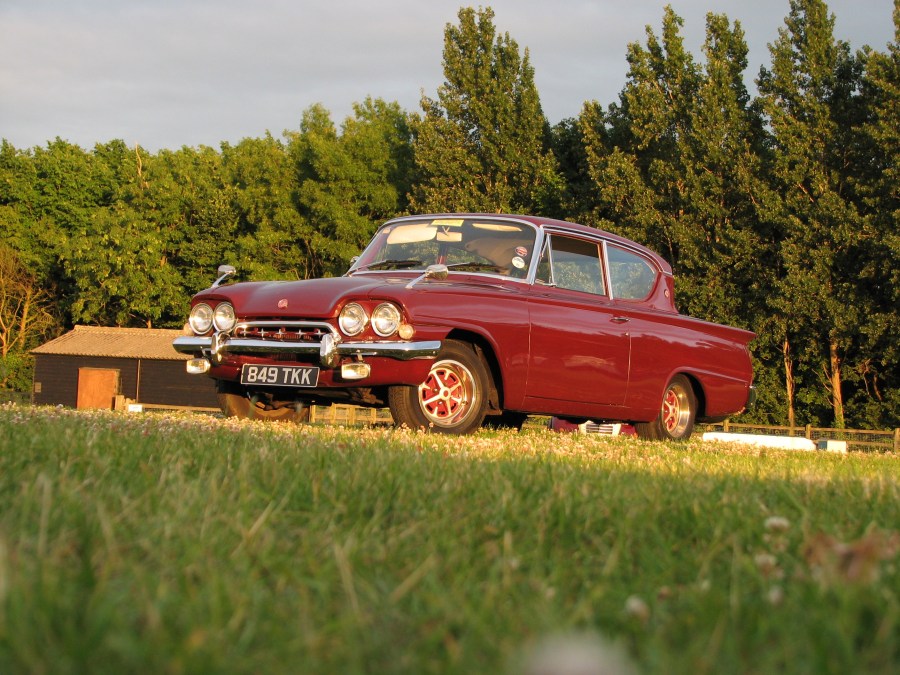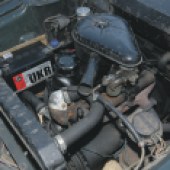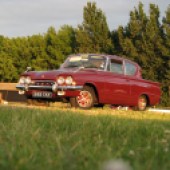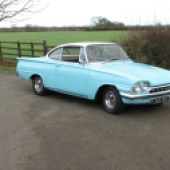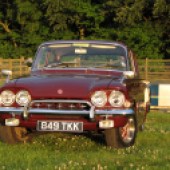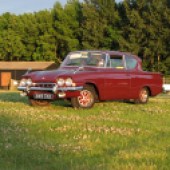The Consul Classic and Capri are rare examples of a marketing misstep by Ford. But there was little wrong with the cars themselves and they make an eye-catching classic choice today
Words: Jack Grover
In the mid-1950s Ford had identified the need for a mid-size car – Ford had nothing catering to the middle part of the market which was rapidly being dominated by British domestic models such as the Austin Cambridge and Hillman Minx. A development project to create a mid-size Ford started in 1956. This was given added impetus when Vauxhall introduced its Victor mid-size model to the British market in 1957.
Ford’s plan was to repurpose the Consul name (established as the name for the four-cylinder version of its big models) for its new mid-size cars, leaving the Zephyr/Zodiac as its big flagship. Development was shared with the ‘105E’ Anglia – the new Consul would use the same ‘Kent’ model OHV engine and its platform and running gear would very much be an expansion of the Anglia theme. Styling also came from a similar source, with glitzy cues taken from popular American Fords – especially the Thunderbird and the Galaxie. This included a low-set nose, quad headlamps under ‘eyebrow’ front wings, a creased waistline and out-turned tail fins.
The new Consul range would consist of two models. There was the Consul Classic salooon with two or four doors and an Anglia-style reverse-rake rear window. And there was the Consul Capri with a sleek pillarless coupe roofline and panoramic windows. Unfortunately the Anglia’s runaway success when it was launched in the autumn of 1959 meant that resources and production capacity intended for the new Consuls was directed elsewhere and the Consul Classic’s launch was postponed until the spring of 1961, with British sales of the Consul Capri not starting until January 1962. By that stage the gap in the market had been filled by rivals. Fashions had changed as well; by the time the Consul Classic and Capri were on sale in Britain, the Thunderbird and Galaxie models their styling aped were no longer in production and the contemporary versions sported a very different look.
The 1.3-litre Consuls were not only down in terms of engine size compared to rivals but struggled under the weight of all that styled steel, chrome and glass. Performance was mediocre, although the cars’ ride quality was praised. A four-speed gearbox with floor-mounted lever and front disc brakes were standard and the Kent engine was smooth, free-revving and economical. The Consul Classic was one of the first British cars to feature multi-speed windscreen wipers, a cigar lighter and a headlamp flasher function.
Ford gave the models more acceptable performance by the end of 1962 with the fitting of a 1.5-litre Kent engine. But the numbers already showed that the Classic and Capri had missed their mark. The instant and formidable commercial success of the sleeker, simpler, smaller Consul Cortina proved that there was no future in the unfortunate Classic and Capri twins. The executive-targeted Consul Corsair replaced the Classic in October 1963, and the Consul Capri was dropped in the summer of 1964, by which time a more powerful model with an engine tuned by Cosworth had been launched. But it wasn’t enough to save the prospects of these two cars that managed to be simultaneously outdated and forward-looking. Of course, the Capri name would return later in the 1960s on another coupe (based on Cortina building blocks), this time with phenomenal success.
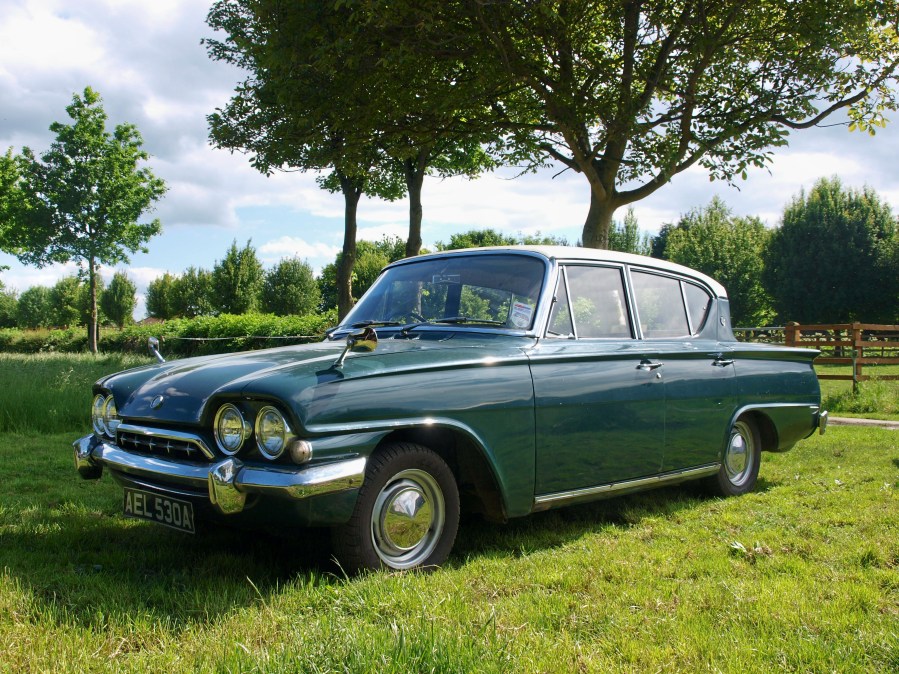
Bodywork
Both versions of the Ford Consul Classic and Capri have a reputation for rust troubles. It’s actually no worse than any other mass-produced late 1950s/early 1960s saloons, and these cars were in great demand as secondhand buys because they had relatively thick panels and floorpans. That was ever such a long time ago now, though, and those flamboyant lines can hide all sorts of moisture traps and seams for rust to get a hold. Check the sills (inside and out), the bottoms of the doors, the wheel arches (both sides), the lower rear part of the front wing, the area around the headlamps and the entire length of the waistline/tail fin on the rear wing, especially where it blends into the boot top.
On the Capri, water drains from the side window seal into the sill cavity – the drain holes at the bottom of the sill inevitably become blocked and rust sets in. Check around the windscreen and A-pillars for bubbling paint as any rust here almost certainly means it’s got into the bulkhead and a full strip-down and restoration is on the cards. See if the doors sag on the hinges or scrape the sills. If they do it may well mean the bulkhead has gone soft. Inspect the floors and footwells and the boot floor for rust. Under the bonnet, check the suspension strut mounts, inner wings and areas around the engine mountings.
The big problem is that all the panels are unique to the Classic and Capri and they were not made for very long or in big numbers so repairs either require sourcing hard-to-find original panels or fabricating ones from scratch – and either course is expensive. The Ford Classic & Capri Owners’ Club (membership of which really is a must if you own, or are thinking about owning, one of these) can provide repair panels for the major trouble spots and holds a stock of full panels, but these go for £1000-2000 each and you’ll almost certainly need multiple panels to repair a rusty Consul.
Some panels are available in new reproduction, and panels for the floors and sills are more reasonably priced. You may well come across cars that have been ‘bodged’ with filler or poor-quality welded repairs, or fitted with glass fibre wings at a time when steel panels were even more scarce. Putting right such a car will probably not be cost effective. There is a lot of chrome on these cars and restoration costs can quickly add up. Badges and bits of brightwork are being remanufactured now, but it all comes at a price.

Engine and transmission
If the bodywork is in decent condition you’re pretty much home and dry since mechanically the Classic and Capri generally use readily available Ford parts and it’s all durable and long-lived. The underpowered and fragile early 1.3-litre Kent engine is an exception – most were swiftly replaced by the 1.5-litre or at least a later 1.3-litre five-bearing engine from a Cortina. Other than that, just check for signs of old age on the Kent engine; blue smoke (especially under load, showing worn bores), heavy ‘breathing’ from the oil filler cap at idle, rumbles from worn bottom-end bearing and a rattling timing chain or clattery valve gear.
Elderly Kents do also suffer from rusted out core plugs, leading to coolant leaks. If the temperature gauge rises when worked hard or idling for a long period, the radiator or cooling passages are probably clogged up. There’s no oil pressure gauge, but be sure that the warning light doesn’t flicker at idle when the engine’s warm – if a gauge has been fitted you want to see at least 40psi when on the move and ideally 10psi with a hot engine at idle. None of these issues are terminal – Kent engine parts are readily available (although some standard items such as non-oversize piston sets and parts for the reverse-flow cylinder head as found on these cars can be surprisingly tricky to track down these days) and rebuilt engines cost around £1500.
The 1.3-litre models have what is essentially a 105E Anglia gearbox, while the 1.5-litre ones introduced the three-rail, all-synchro ‘Bullet’ unit later used widely in the Cortina, Corsair and performance Escorts. Both ‘boxes can be rebuilt with little trouble or cost (£500 or so) if they’re worn. Check that the synchromesh (where used) works smoothly, that the ‘box doesn’t jump out of engagement if the throttle is suddenly closed and that there are no rumbles or screams from worn bearings. Watch for knocking sounds from chipped teeth on first gear in the early cars.
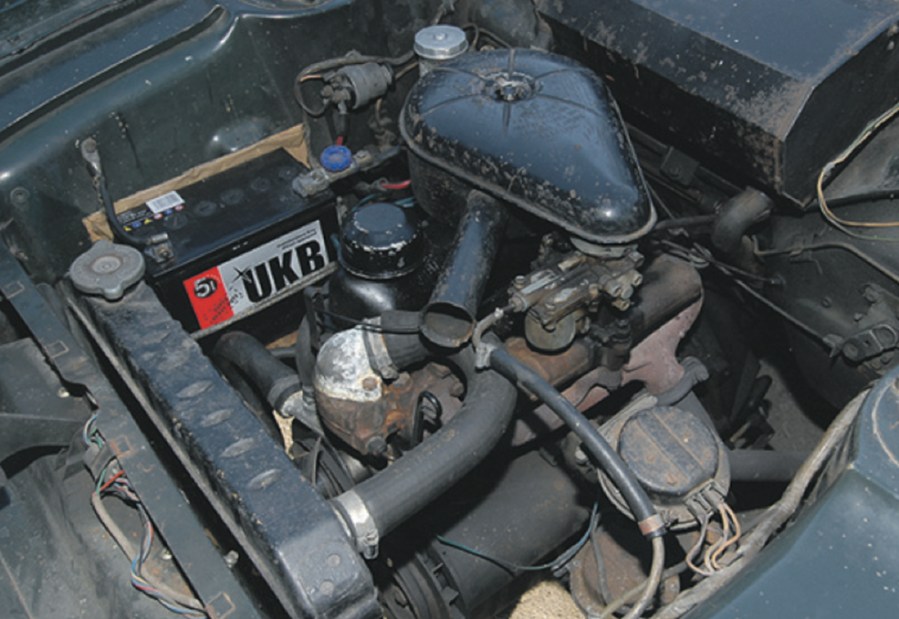
Suspension, steering and brakes
The basic mechanical layout – front Macpherson struts with coil springs and lower track control arms, a live rear axle on semi-elliptical leaf springs, a worm-gear steering box with drag links – show the Consuls’ parentage as a scaled-up 105E Anglia and would be familiar on many other Fords of the 1960s. It is simple, straightforward and robust so long as structural corrosion hasn’t affected the mounting points. But while it may look familiar, a lot of the specific parts are model-specific.
If the struts themselves are worn then you’ll have to find a new-old stock or good second-hand replacement, which is difficult and costly. Individual bushes and bearings are available new, so if the strut is good enough for an overhaul then that’s not the end of the world. Listen and feel for knocking from the top bush and wandering, baggy handling on the road. Rear leaf springs are available new for about £550 per pair, so if the originals are rusted solid or have lost their shape that’s an easy fix.
The steering box itself is long-lived and wooly steering or a car that drifts along its course is likely to be caused by a worn idler joint on the drag link. New joints, bushes and coupling for the steering system are still available, but steering boxes are not. Existing ones can be rebuilt, and a conversion kit does exist to convert Consuls to a steering rack using later Escort parts.
Front disc brakes as standard was one of the Consul twins’ selling points. Ironically the front discs themselves are no longer available – mostly because the existing stock was long ago snapped up to upgrade Anglias. New calipers can be bought if there are leaks or wear, and all the parts for the rear drums and the rest of the hydraulic system are still available. Be sure that the discs are not corroded, pitted, warped or worn and that the rest of the system is continent.

Interior, trim and electrics
The soft furnishings of the Ford Consul Classic and Capri are largely unique to each model, so if the interior is tatty then retrimming by an upholsterer is the way forward – expensive, but worth it and a good way to obtain a car at a reasonable price if the structure is good but the interior isn’t. Two-tone vinyl seats were standard, with cloth and leather being very rare optional extras.
The Consul Capri GT came with an all-black interior, a leathercloth dashtop and extra instruments – all these features need to be present and correct on a decent example today. The horn rings are fragile in old age, break easily and replacements are scarce, so you want to see one in good condition on any prospective purchase. Most of the dials and switches also appeared on the Anglia and Mk3 Zephyr, so are not too difficult to put right.
The electrics are simple and consists entirely of industry-standard Lucas, AC Delco and Butler parts that are easy to find either in original or reproduced form. Just be sure that the car’s wiring loom hasn’t become brittle with age (a full rewiring will be expensive since ready-made looms don’t exist) and that the connectors and earth points are in good condition – there’s not much electrical gear on these cars but what is there should work properly.
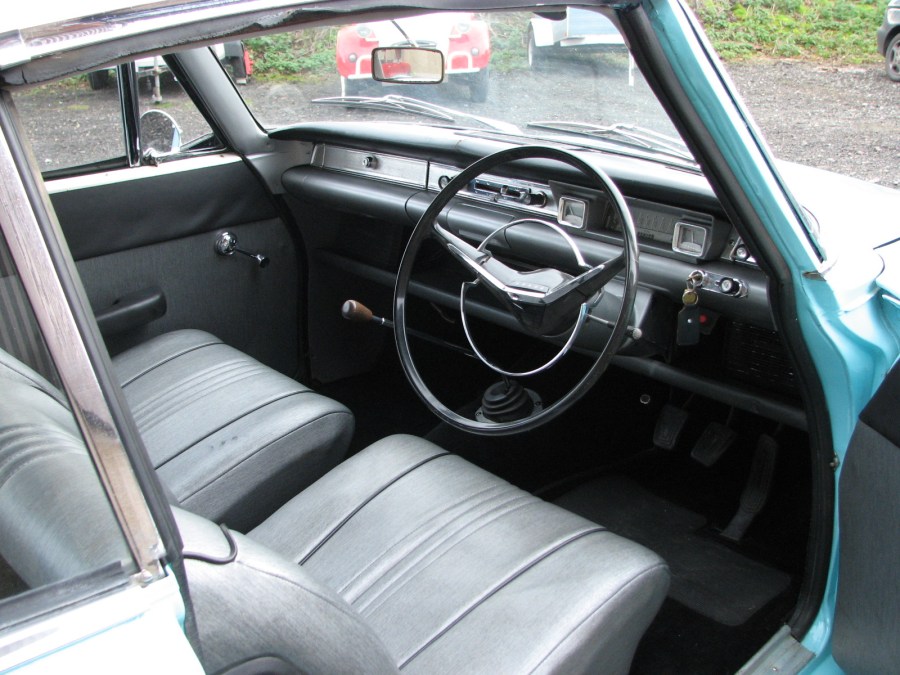
Ford Consul Classic & Capri: our verdict
Classic by name, and classic by nature. These are one of these cars that was almost born to be an enthusiast’s pride and joy. The passe styling, mediocre performance and relatively high cost that blighted the models when new doesn’t matter now – these Fords will turn heads wherever they go. They drip with late 1950s American character but at a usably British scale and use widespread and familiar mechanical parts. Get one in good structural and cosmetic condition and you’ll have a superb classic that’s a real slice of Ford history.
Inevitably the Consul Capri is significantly more valuable than the Classic. Prices for decent coupes start at £10,000 for one that’s solid and presentable but will probably have a non-original interior and perhaps some later mechanical parts. One with the original interior in good condition and high-quality paintwork with all matching colours and trim will be £20,000 and a fully restored Capri in concours condition will go for £25,000-30,000. Viable projects will be worth £3000-5000.
The Consul Classic is much more affordable, with £12,000 being the price for the very best examples in restored or highly original condition. An solid but average one, perhaps with some non-original trim or an older respray in a non-original colour, will be £5000-7000 and a project case will be £1000 or so.
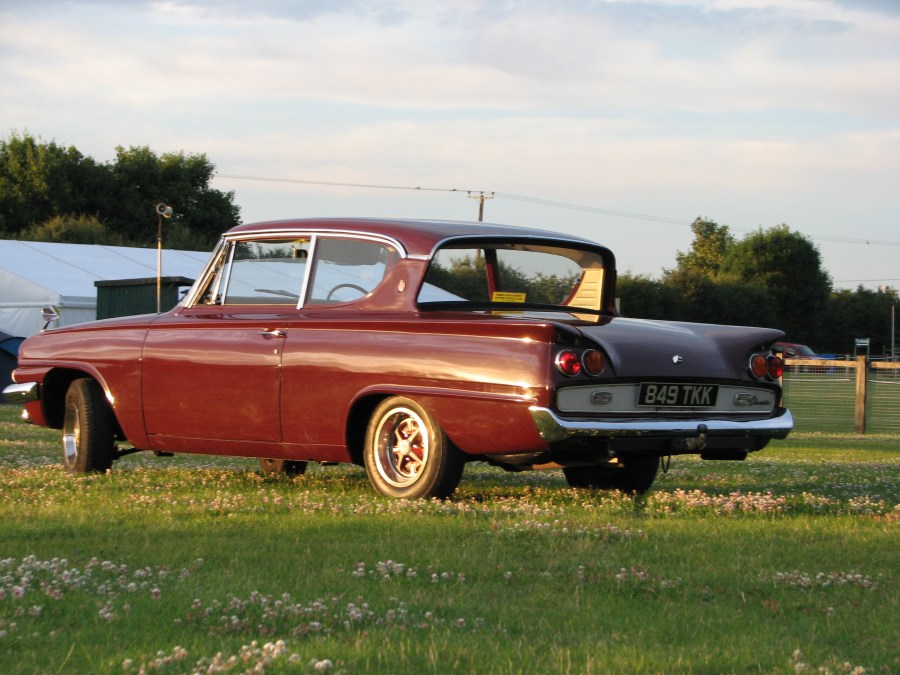
Ford Consul Classic and Capri timeline
1961
Ford ‘109E’ Consul Classic saloon launched in April, with 1.3-litre 53bhp engine. Two- and four-door bodies available in Standard or Deluxe trim.
1962
January: Ford 190E Consul Capri coupe introduced.
September: ‘116E’ Consul Classic and Capri models introduced with 1.5-litre 59bhp engine, full-synchromesh gearbox and ‘greased for life’ suspension and steering components.
1963
February: Consul Capri GT launched, with Cosworth-developed engine with higher compression ratio, larger exhaust valves, aluminium intake manifold, four-into-one exhaust manifold and twin-choke Weber carburettor making 78bhp.
October: Consul Classic ends production, with 111,225 produced.
1964
June 1964: Consul Capri productions ends: 19,421 were made, including 2002 GTs.

